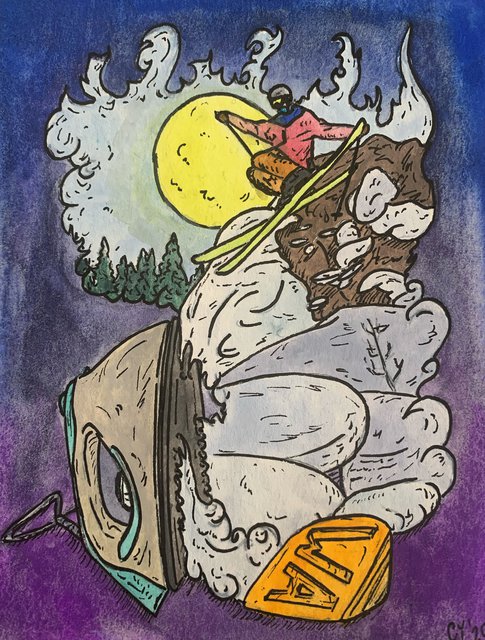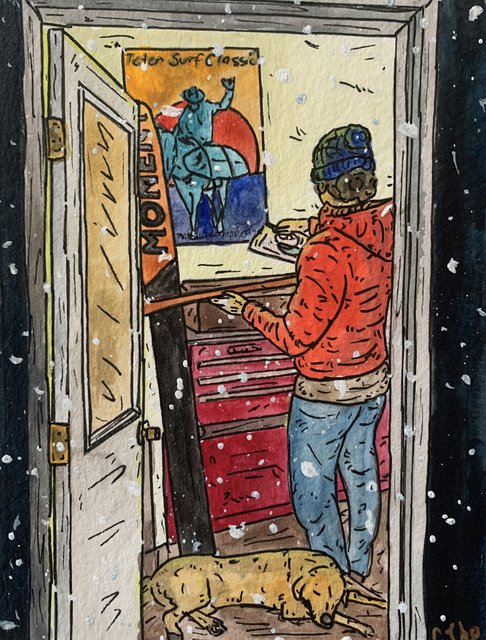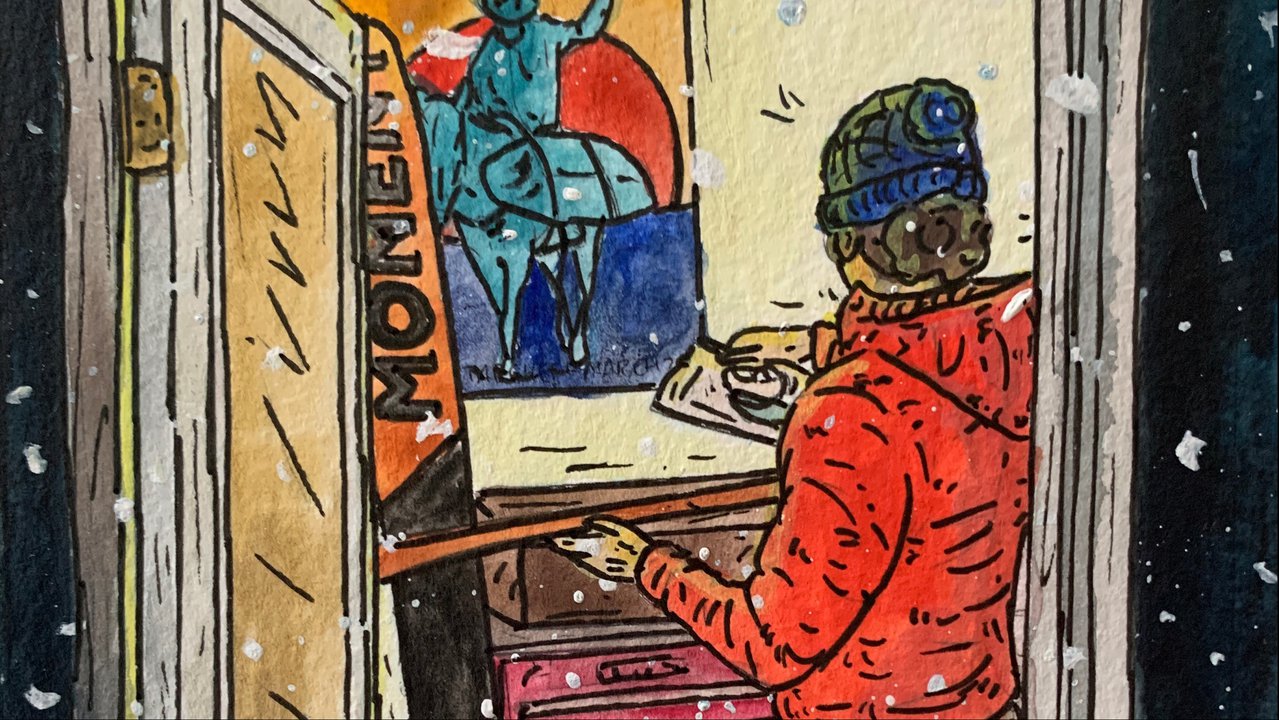I own two aprons. One is for cooking, and the other is to wear when I work on toys. Through the summer it carries a thick coating of bike lube, intermixed with some brake fluid stains and stanchion grease. The pockets fill up with spare master links, the retainer clips for brake pads, and frayed cable ends.
For a brief week or two during the shoulder season, the bike fluid stains are mixed with wax droplets, p-tex smudges, and epoxy chunks as I prep skis for the winter. I dump out the pockets and replace the bike paraphernalia with a gumi stone, a pozi driver, maybe a small bar of skin wax.
A snapshot of the state of my apron, without context, is a pretty good indicator of what time of year it is. “Woah, there are DOT fluid stains all over the place, he must have tried to bleed his brakes with the wrong fitting again.” or “I wonder if he knows that it’s possible to use two-part epoxy without getting it all over everything?” I wear aprons to protect my clothes from the messes I make, and those messes indicate the changing seasons as well as any calendar.
I don’t know what it is about working on my own gear, prepping it for the season. I don’t really meditate, once I tried to do a Zoom yoga class and the dog just humped me on camera instead. But working with my hands brings a special kind of clarity. It always takes me a minute to get back into the zone. I have to fiddle with the wax iron to figure out the perfect temperature, remind myself how to get a p-tex stick to stay lit. But once I find my rhythm, I’m in my own little world. The world can rage on, social media can spew its vitriol, but I’m engrossed in anticipation for imminent activities.

As I tune my skis I get lost in rambling hypotheticals like a stoner trying to explain fractals. Where does a ski turn truly start? Does it start when I roll my ankles over inside my boots, shift my weight to the side? Does it start with my attitude when I got off the lift? Does it start with how well I waxed my skis last fall? Does it start with the experience someone was trying to distill when they built those skis? Does it start with the life of every snowflake that’s displaced by that turn? The world spins and I repair core shots. How well I detune this edge will affect countless turns, slashes, and spins over the coming weeks.
Binding mounts are different, more analytical. I’ve been mounting my own skis since before I was a skier, back when I only ski bladed I stole some bindings off of yard sale skis and freehanded them onto my blades. Since then, I’ve had a few periods of relapse, special pairs of skis that I didn’t drill myself, times when I’ve relied more heavily on shops. But there’s something personal about printing out the template, or better yet, reverse engineering my own template. I obsess over centering it on the ski, do calculations to determine what BSL to mount it at to accommodate the most pairs of potential boots. I hold my breath as the drill sinks deep in the first hole and I giggle a little as I cinch the last screw down.

Skiing is engineering after all. We take a set of tools (skis, boots, bindings, the muscles of the human body) and combine them with a set of variables (snow conditions, edge angles, how hungover we are) to create a deliverable: face shots. It makes me want to figure out a way to quantify ski flex, to watch in slow motion as the ski twists over onto edge, bends into its sidecut, floats and bites and pushes snow. I don’t just want to know where every turn starts, I want to be able to explain every step along that journey.
My skis are waxed. New bindings mounted, DINs adjusted, AFD’s checked, and edges detuned. There are fresh stains on my apron as I look up from my tasks with a clear head. It’s overcast, and the first few snowflakes of the year are dancing toward the ground. They’re stacking, building a base, getting ready for those first turns.


Comments